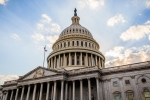
Championing the ART of wellness in our public, community safety and justice communities
25 March, 2022
Contributors:
Chris Moore, Partner, Public Safety & Justice, PwC Canada
PwC Canada’s Public, Community Safety and Justice practice is launching a campaign this month to draw attention to wellness among the community safety and justice workforce.

Why are we doing it now?
This isn’t a new or surprising issue. It’s well known that law enforcement personnel including call takers, border services and correctional officers, paramedics, firefighters, coroners, and other emergency responders are at an increased risk of post-traumatic stress disorder (PTSD) and poor mental health1. This is also an issue emerging in the justice community, with more recognition and discussion being had of the trauma and harm being caused via legal proceedings to Crowns, Defence, Judges and Justices, juries, court staff, and participants.
While these challenges predate COVID-19, the pandemic has exacerbated this situation through the additional workplace and family demands that many of us have experienced. Some of the same triggers remain, such as organizational stressors and cultural and exposure to external traumatic incidents, images and experiences.
But new factors have also emerged. The pandemic has led to additional workplace and family demands for many of us, but for the public and community safety workforce it has also led to a redefinition of roles and responsibilities and increased public scrutiny. In recent years, nearly all of our meaningful interactions with our clients have come back to how first responder organizations can support their staff, families through formal and informal mechanisms that address these challenges and the trauma their employees and participants face on the job.
Improving wellness among the public, community safety and justice workforce at all levels and in all jurisdictions is a process of continuous improvement. A number of organizations, governments and others have made significant progress addressing concerns about suicide, anxiety, PTSD and depression in a variety of ways. Could more be done? Absolutely. Is there a single right way forward? No.
How is PwC Canada supporting first responder wellness?
PwC Canada’s campaign, the ART of wellness, has three goals:
Assess and articulate
First and foremost, a collective process of listening and learning needs to take place among those who have undergone trauma themselves or are working to put in place measures to address it. This will allow us to understand the nature of the problem within organizations and the wider sector itself. It’ll collectively help us—meaning all those who choose to be involved in the dialogue—to understand how the stressors in one organization are different from those in another based on its culture, the type of work it does, how it’s managed, where it’s based and other factors.
Respond
There’s a tendency to jump straight to developing solutions when it comes to wellness. This is particularly true when an organization’s DNA and purpose is structured to respond to crisis, as is the case with most community safety agencies. And without a doubt, the intent is to improve and make things better for those who are suffering. But there’s a risk that in some cases the various initiatives put in place don’t make things better and can actually make them worse, such as by making individuals feel ostracized or wary about seeking help because of perceptions about how it could impact their careers.
Test and train
The final goal of this campaign is to start thinking about training organizations to do better. Improving outcomes associated with wellness is an ongoing process. Critically, it’s also about identifying what success looks like—a task that can be fiendishly difficult, especially when long-term success might, in some cases, look like short-term failure. For example, organizations may initially see an increase in the number of people using sickness benefits for mental health, but ultimately see those staff returning to work sooner and more resilient. This is also about supporting organizations to test what is working through evidence-based testing and eventually training an organization to sustain an integrated program of wellness.
Why is PwC Canada doing this?
This topic is front and centre in many of our conversations with clients and friends who work in the sector. This might be an Indigenous police chief concerned about the trauma their officers experience due to the higher levels of crime severity in the communities they serve, or corrections management concerned about the prolonged impact of inmate violence on their staff.
It’s also core to PwC’s purpose to build trust in society and solve important problems. We want to inspire other organizations to explore how they can build trust with their own workforce. And this topic gets to the heart of trust through the trust our clients place in us by sharing their personal vulnerabilities. And we know wellness impacts not only employees themselves, but also the culture of their organization—something that spills over into how well they can serve our communities when we need them most.
Finally, wellness is an issue that’s closely aligned to our individual journeys. Leaders within our organization, including Chris Moore—the head of our Federal Public Safety practice—have talked openly and set an example about working through their own mental health journey. We’re committed to listening, learning and hopefully being part of the solution rather than standing on the sidelines. We look forward to your engagement and discussion as the dialogue develops.
1 Ashley Fitzpatrick, “First Responders and PTSD: A Literature Review,” Journal of Emergency Medical Services, published July 8, 2020, https://www.jems.com/administration-and-leadership/first-responders-and-ptsd-a-literature-review.
Related content


Government and Public Services
In times of unprecedented change, government & public sector organizations must adapt to change with the right skills, strategy, knowledge and capabilities.

How Peel Regional Police is becoming Fit for Purpose
A look at one Ontario police service's strategies for policing innovation.

Building trust for today and tomorrow
Now is the time to lead with purpose and transparency to protect and power your business.
Contact us





















